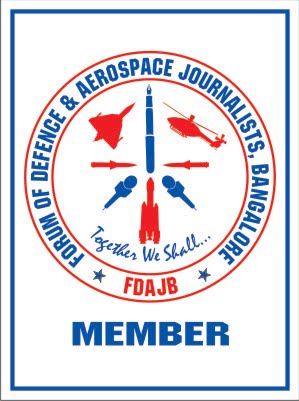By Anantha Krishnan M
Express News Service
Bangalore: 'Fix' the weather first and then fix the flight-plan! The Director General of Civil Aviation (DGCA) now wants civil chopper pilots to obtain proper weather updates before flying. Logic: Numerous chopper accidents in the recent past have occurred due to pilots flying in inclement weather conditions inadvertently. But, the pilots say in unison that the regulatory authority is running away from their responsibility, putting them into a real fix. Their logic: DGCA must ask MET department to improve weather predictability.
'Weather' the pilots like it or not, a recent two-page circular issued by A K Saran, joint director, DGCA, clearly puts the onus on them (see below). Express' sought the reactions through a professional guild of Indian helicopter pilots, only to see the rotor wing clan flooding with their responses, enough to even write a book! However, the anonymity pact was put in place.
“Overconfidence, over weight of the helicopter and weather are the biggest enemies of a helicopter pilot. A pilot can control the first two, but weather is beyond control. A pilot who is always weather-wise will never require his superior skills to get out of an unforeseen situation. The DGCA require to put pressure on the MET department to improve weather predictability, establish met facilities at all division level and most importantly update it at every 30-minute interval so that the pilot\operate can easily accessible it,” a senior pilot said.
Saying that the DGCA regulations are inspired out of the one prevalent in the United Kingdom, the pilots claimed that the size of UK could be smaller than UP. “Can we manage a country like India which is much bigger than UK, but with the same amount of infrastructure? We do not have adequate coverage of MET station and R/T (radio transmission) for the full length and breadth of our country. Helicopter operations have always been given the last preference while in the developed and Western world they are the most important. The DGCA is still yet to come to terms with it,” another pilot said.
The pilot say that the circular does little to address the primary concerns of helicopter flying, and attempts to solve it typically in the ‘fixed-wing’ way; whereas, both these types of operations differ significantly. “Aeroplanes fly at higher altitudes, and cover greater distances. They are benefited by the genralised information being made available by the IMD website, and the type of briefings being afforded by the Met departments in airfields. Helicopters very rarely, fly between airfields. Mostly, they have to operate from helipads where the necessary weather expertise does not exist. They require more specific weather inputs from such locations,” sources said.
A Hyderabad-based chopper expert said that best option would be simulators. “Helicopters do not fly (always) over urban areas, areas covered by met forecast, areas having internet connectivity. To expect enroute weather trend to be accurate will be a mistake. A pilot has to learn to take correct decisions leading to safe flight (this sometime comes from experience). This needs to be taught, not by theoretical classes but by the use of simulators where various situations can be created,” the pilot, with over 5,000 hours of flying said.
The DGCA says that its instructions are only guidelines and asked the operators to develop their own system and checks to ensure that all pilots fly in safe weather conditions only. “This aspect will be checked by during the annual audits of the operators and during random ramp inspections of helicopter flights,” the circular warns.
THE DGCA DIKTAT
1. All helicopter flights will be executed only when weather at port of origin, enroute and at destination is within the pilot’s and helicopter’s minimas (requirements), with no significant ‘trend’ to deteriorate.
2. In case the launch of flight is delayed by 30 minutes or more, the PIC (pilot in command) should obtain latest destination weather on phone or make use of satellite bulletins available on mobile internet to do so and get the trend.
3. For helicopters carrying out shuttle services/ flights between helipads in uncontrolled airspace or offshore, the operators will make arrangements to make available existing weather at the helipads/ helidecks to the pilots on RT every 30 minutes.
4. In case the pilot encounters bad weather at any stage of flight which would entail VFR (visual flight rules) fight entering into IFR (instrument flight rules) conditions, he/she shall take timely decision to discontinue the flight or take alternate action as per the flight plan clearance.
5. During monsoons and during times when visibility is low, if any section of flight is over hostile environment (terrain, vast water body, dense vegetation or militant activities where immediate landing is not possible), all helicopter flights will be planned very deliberately with alternate route, force landing fields etc and will be monitored by the operations branch of the operator.
Copyright@The New Indian Express






















